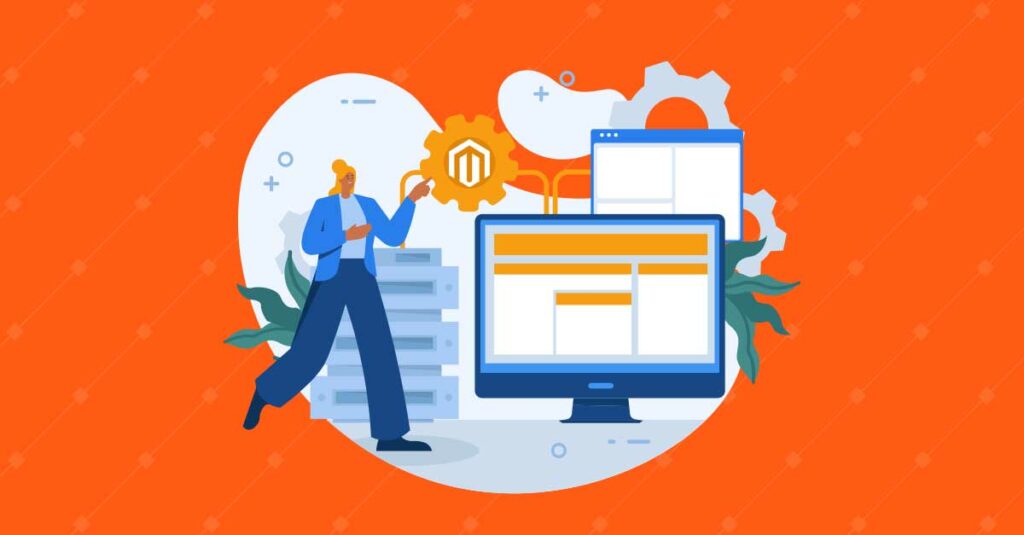What do online store customers want?
The consensus seems to be that they not only crave a fast and seamless shopping experience but also look forward to buying things on the go through a multitude of devices like smartphones and voice assistants. Does this mean that eCommerce is no longer the exclusive preserve of desktops? Absolutely!
In fact, the buyer journey has become more complex and spans multiple channels, including many that were not part of the mix earlier. For instance, studies suggest that 43% of shoppers worldwide research their products online through social media.
This is a major shift for companies depending on online retail sales – as a large chunk of their incoming web traffic now comes from non-desktop sources. The onus is now on them to provide a frictionless experience that stays consistent and wrinkle-free irrespective of channel or stage of the buyer journey. And they need to do this fast and be ever ready to pivot to address the next new customer pain point.
This is the context in which online retail is looking at headless commerce for solutions.
How does headless commerce work, and how can it power retail success through increased flexibility and agility? Let us dig deeper into this.
What is headless commerce?
In simple words, headless commerce is the separation of the front end and back end of an eCommerce application. This decoupling of architecture offers retailers the freedom to quickly build whatever they want at crucial customer touchpoints, eventually enriching the customer experience.
Wondering how headless commerce works? Let us have a look at its working and benefits.
How Does headless commerce Work?
A headless commerce platform houses information in a central database and can deliver requests anywhere through APIs. From mobile phones to wearable IoT gadgets to voice assistants, APIs can deliver information to any device. How is this better? For a start, it provides faster delivery than traditional eCommerce platforms along with a better customer experience.
For instance, consider when a customer makes a payment on your website or mobile app. The headless commerce architecture could make it easy to facilitate communication between inventory management, payment processing, CRM, and other systems to update records once the transaction is complete.
The Coming Together of Headless Commerce and Order Management
Benefits of headless com
merce In Retail
More and more companies are adopting headless technology because of its numerous benefits. Eager to know how your retail business can benefit from headless architecture?
Here are some evidence-based advantages of switching to a headless commerce platform:
1. Offers flexibility to both front-end and back-end developers
In traditional eCommerce platforms, front-end software developers face several challenges when making any required changes to the software code or database tables. This includes:
- Limited time for making and testing changes.
- Limitations as to which platform functionality can be updated (or not).
With no predefined front-end platform in headless commerce, developers are free to create a user experience from scratch based on the core business needs. With headless commerce, they no longer need to worry about modifying back-end databases. For example, front-end developers have the freedom of integrating IoT-enabled tools like proximity marketing, intelligent cross-selling, and loyalty programs into the headless CX platform.
How Headless Commerce is a great fit for Content-driven online brands
2. Helps businesses remain competitive.
Online shoppers use multiple channels to do their purchases. Therefore, retailers need to support more devices to become faster and more flexible with the technologies. The headless architecture allows the separation of commerce functionality and performance from the user experience – thus enabling retailers to provide the best shopping experience.
There are fewer boundaries regarding customer touchpoints, and therefore, companies can build robust features such as shopping carts, product information management, promotions, and merchant tools that are independent of the user’s device. For instance, consider the case study of Kubota, a popular Polish fashion brand. It faced a huge challenge in the 2000s while expanding its reach to a younger audience who used mobile devices for making any purchase. Switching to a headless commerce platform addressed the challenge of catering to the newer audience, and Kubota enjoyed a 192% growth of daily visitors and improved loading time by over 30%.
If User Experience Is Your Focus, Headless Commerce Must Be Tool
3. Provides a personalized customer experience
The key to boosting sales for any retail business is offering personalized customer experiences. In a survey of 1,000 adults by Epsilon and GBH Insights, 80% of respondents said they wanted personalized services from retailers. Nowadays, customers look forward to interacting with a retailer through multiple touchpoints.
A headless commerce platform enables companies to analyze data from front-end sales to match customer tastes and preferences. For example, you can add features like custom shopping preferences, personalized recommendations, and promotions directed toward the customer based on purchase history across mobile apps and social channels.
Amazon is a perfect example of how brands can leverage headless architecture. It provides a consistent shopping experience to its Amazon Prime members across a range of desktop, mobile phones, and voice-enabled devices.
4. Results in increased conversion rates.
Based on no less than 34 different studies, Baymard Institute concluded that nearly 69% of online shopping carts are abandoned by online shoppers. Retailers can reduce this number by instilling a sense of excitement among their customers. A headless commerce platform gives flexibility to in-house developers and allows them to be creative and introduce new features. For example, you can create individualized promotions, quizzes, and online games to build customer excitement and anticipation.
This will result in increased conversion rates as engaged customers bring in 23% more profits. Moreover, customers also base their buying behavior on strong emotions or connect with a brand based on their experiences.
5. Helps save costs in the long term
Among the common myths, headless commerce is thought to be more expensive than traditional commerce. However, that need not be true. When you analyze the costs in detail, headless commerce technology helps retailers save a lot of money in the long run through improved flexibility and easier integrations, which finally adds to a better ROI and increased efficiency.
With no intermediary layers between the back-end and front-end systems in headless commerce, online stores can save money that goes into maintaining communication between these extra layers. Moreover, headless commerce allows businesses to offer omnichannel experiences. This means that you can cut down significant costs and time spent on customer acquisition across multiple devices and channels.
For instance, K2 Sports, a company that sells sports and safety equipment of iconic global brands, achieved cost-effectiveness by choosing a headless commerce platform over the traditional one that limited their operations in several aspects.
Conclusion
With a headless commerce architecture, online retail stores can be prepared for changing customer demands, as well as any future additions (or changes) to their eCommerce platforms. With more and more brands adopting headless commerce, it won’t be wrong to say that it is becoming the new normal in digital commerce.
Want to know how you can retain customers and attract more? Ignitiv’s eCommerce solutions are directed towards more revenue growth and better conversions. Get in touch with us to know more.







